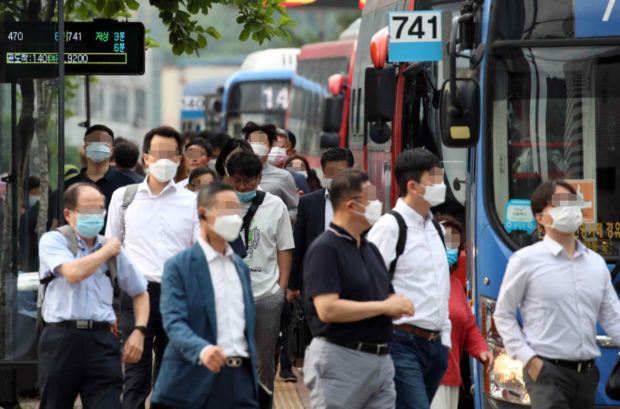SEOUL — One in 10 of the coronavirus infections that occurred in the past two weeks had unknown sources, with a considerable proportion of them in Greater Seoul, health authorities said Monday.
This is twice the proportion suggested by health authorities as one of the standard metrics for maintaining “everyday life quarantine.”
Among 618 coronavirus cases reported June 1-14, 63, or 10.2 percent, had transmission routes that health officials were unable to trace, according to the Korea Centers for Disease Control and Prevention.
Over 80 percent were concentrated in the capital region in tandem with community spread in the crowded part of the country, which is showing no signs of abating.
“Mass outbreaks in the community are focused mostly in religious facilities, nursing homes, social welfare centers and businesses. While focusing efforts to prevent the virus in high-risk categories, we also need to secure medical supplies and keep social distancing to block chains of infections,” KCDC Director Jung Eun-kyeong said at a daily briefing.
South Korea recorded 37 new coronavirus cases on Monday, of which the capital region accounted for 22 locally transmitted cases — eight each in Gyeonggi Province and Incheon, and six in Seoul, according to the KCDC. Two more cases occurred in South Chungcheong Province.
A spate of small-scale clusters in the densely populated Seoul and surrounding areas continued to be largely responsible for spreading the virus in the community.
Nearly 170 infections were linked to a nonregistered door-to-door sales company based in Seoul, called Richway, as of Monday, according to the KCDC.
Seoul City eased restrictions on nightlife establishments that do not involve dancing, lifting a ban that had been imposed since March, on the condition that they adhere to virus prevention guidelines and requirements, the city government said.
Shutdowns of establishments such as nightclubs and discos, where dancing is central to the business, are to be lifted in a step-by-step process.
“The measure took into consideration that dancing increases the possibility of infections caused by droplets. We plan to review easing the ban on other entertainment facilities such as nightclubs in tandem with the rate of community spread,” a Seoul City official said.
Korea’s top health official warned of the potential for the virus to spread to other parts of the country.
“There have been 27 major mass outbreaks since May, of which 26 were reported in the capital region. We can’t rule out the possibility of infections in Greater Seoul spreading to other regions,” Health Minister Park Neung-hoo said during a briefing in Sejong.
“Infections traced to an unregistered door-to-door sales company have been transmitted to eight places, including a church-run shelter for Korean Chinese and a call center, so the situation in the capital area is serious.”
Meanwhile, of the new infections, 24 were contracted within the community and 13 were imported cases, the agency said.
National totals came to 12,121 infections and 277 deaths.
